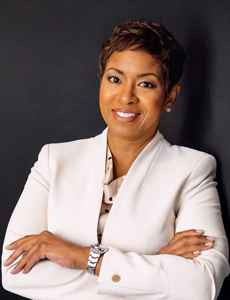Predictive Analytics and Excellent Talent: A Winning Strategy for Preventing Workers’ Comp Claims

The best claim is the one that never happens.
Anyone in the workers’ compensation space would agree. And, because we’re living in the times that we are, predicting and preventing claims is becoming something much more achievable than it ever was before.
Technology is booming: Predictive models and artificial intelligence are aiding claims teams in doing their jobs efficiently and effectively. Together, the tech and the talent are driving results.
“What we find to be the winning strategy is to constantly look at and iterate on tying together those two things. It is the people and the analytics, and that’s going to be a constant evolution,” said Virna Alexander, SVP, workers’ compensation claims, Helmsman Management Services.
Technologies like predictive analytics give the team an edge, enabling adjusters to make more accurate and informed decisions earlier in the claims process. That’s because analytics can sort through the data quickly, review past experiences and generate a recommendation in seconds, versus having a person read through everything one piece at a time.
“The claim team’s goal is to understand the full breadth and scope of the risk at the earliest possible time,” said Alexander. “If we can predict the severity of a claim sooner, then we will have a better, more clear-eyed approach to efficiently and effectively manage the claim and produce the best outcome for the injured worker and their employer.”
How Predictive Analytics Changes the Game for Claims and Risk Control
Predictive analytics not only helps the claims team, but it is also helping risk control experts prevent loss from happening in the first place.
“Risk control and claims intersect in a feedback loop,” said Alexander.
“Data drives both risk mitigation and claims management. Each team leverages analytics while adding to the data that improves those models. Risk control consultants often pull from claims data to understand what drives accidents at a customer’s facility and suggest ways to improve safety to help prevent them. Claims often benefits from risk control’s input on a customer’s workplace practices to identify potential subrogation opportunities.
“This real-time nature of modeling makes it effective. It’s not static. And as we look to potentially eliminate the cause of one injury type, we’re already pulling data and getting foresight on the next type,” Alexander said.
The Helmsman team has been integrating predictive analytics into its claims model for years, she added. She feels confident that they’ve been able to set an example of how this approach really works.
“We continuously improve our data collection, analytics and models. Most recently, those efforts focused on capturing the benefits of tremendous advancement in technology and applying them to the new post-pandemic hybrid workplace at many of our customers,” she shared.
The Predictive Analytics Consulting (PAC) services that the Helmsman team offers leverage that data and analytics to predict risk in order to focus mitigation efforts where they will have the greatest impact. By having large sets of data available by industry, customer size and type, the models can alert to action points and the experts can make informed suggestions to clients.
Tying Tech and Talent Together
These tech tools are making workplaces safer in real time. Of course, “tools are always going to be necessary, but they’re not going to replace the work that needs to be done by polished and well-trained professionals. Rather, technology helps claims and risk control professionals deliver the most value to customers and injured workers,” Alexander said.
Talent plays a huge role in claims adjudication. Therefore, training that talent is key. And at Helmsman, the rich data sets and capabilities of its predictive models are enabling its talent to thrive.
“Coming out of the Great Resignation, we’ve all had to tackle this issue of having lower tenured staff,” Alexander related.
“What predictive analytics has enabled us to do is onboard talent more effectively. We’re able to train them in handling types of claims that, in prior years, they wouldn’t have been as adept to handle as quickly, because analytics gives them an aided awareness to what could be happening in the claim.
“This most recent suite of predictive analytics has really aided in training and what I’ll call claims curiosity,” Alexander said of Helmsman’s PAC services.
What Alexander means is that if a model were to alert the claims team member to potential hindrances to a claim — like a low propensity that the person will return to work, as an example — it creates a sense of curiosity within the claims team member to dig into the file a little deeper.
Why might the person not return to work? What factors did the model see that might need adjusting? What resources should be brought in to get the claim on track?
“The alerts enable claims professionals to be curious, and to reach out to other resources and people who have experience with more complex claims.”
Having curious minds behind their claims team serves clients well. As Alexander puts it, curiosity leads to focus on the most critical tasks, which is only made possible because the administrative functions have been automated by predictive analytics.
“What makes the team successful, what gets them laser-focused on the critical aspects of claims management, is having the right work assigned to the right resource, aided by artificial intelligence,” she said.
When predictive analytics, top-tier talent and bringing in risk control are tied together, clients are getting a claims management strategy that goes beyond the norm; they’re getting one whose goal is aligned with predicting loss and preventing injury.
“And that, really, is what a risk manager wants to do. They want risk control tools aimed at prevention to help make decisions, both for their worksites and for their towers of insurance, to cover their exposures,” Alexander said.
“We’re constantly looking to create more models. This is not a static environment,” she continued. “I’m proud that, at this point, we feel like we have hit the sweet spot between aided awareness and aided claims adjudication, and that will just continue going forward.” &











